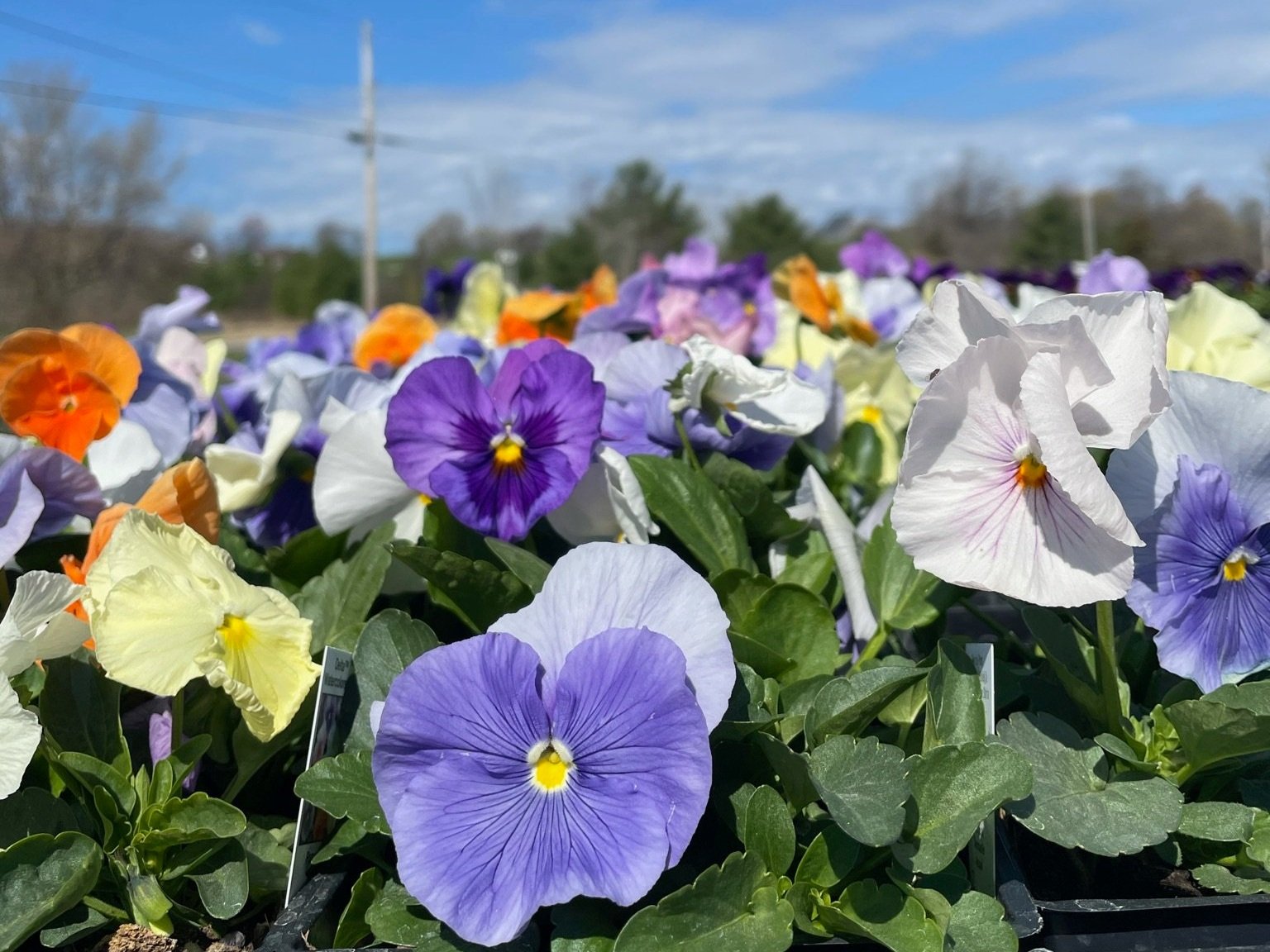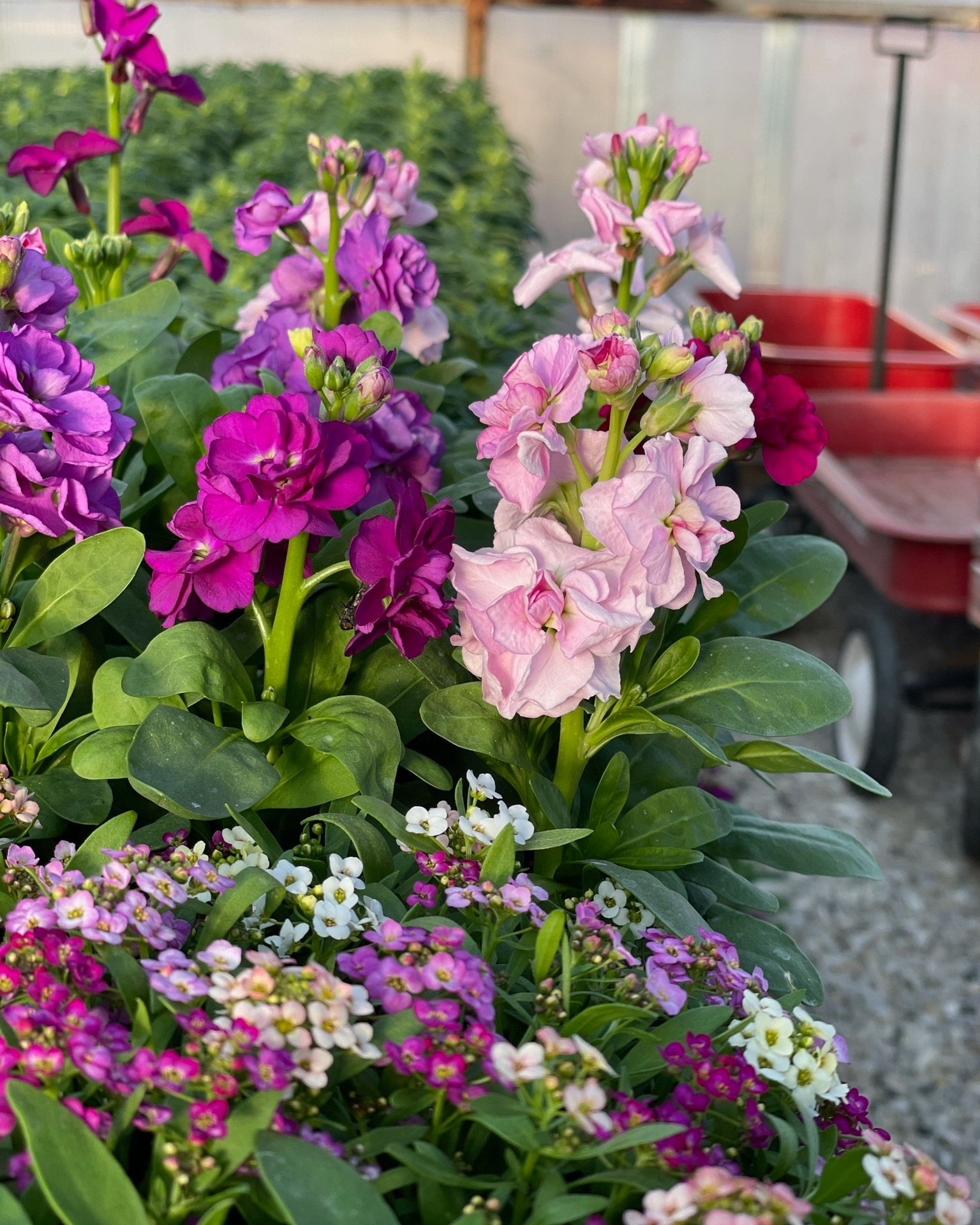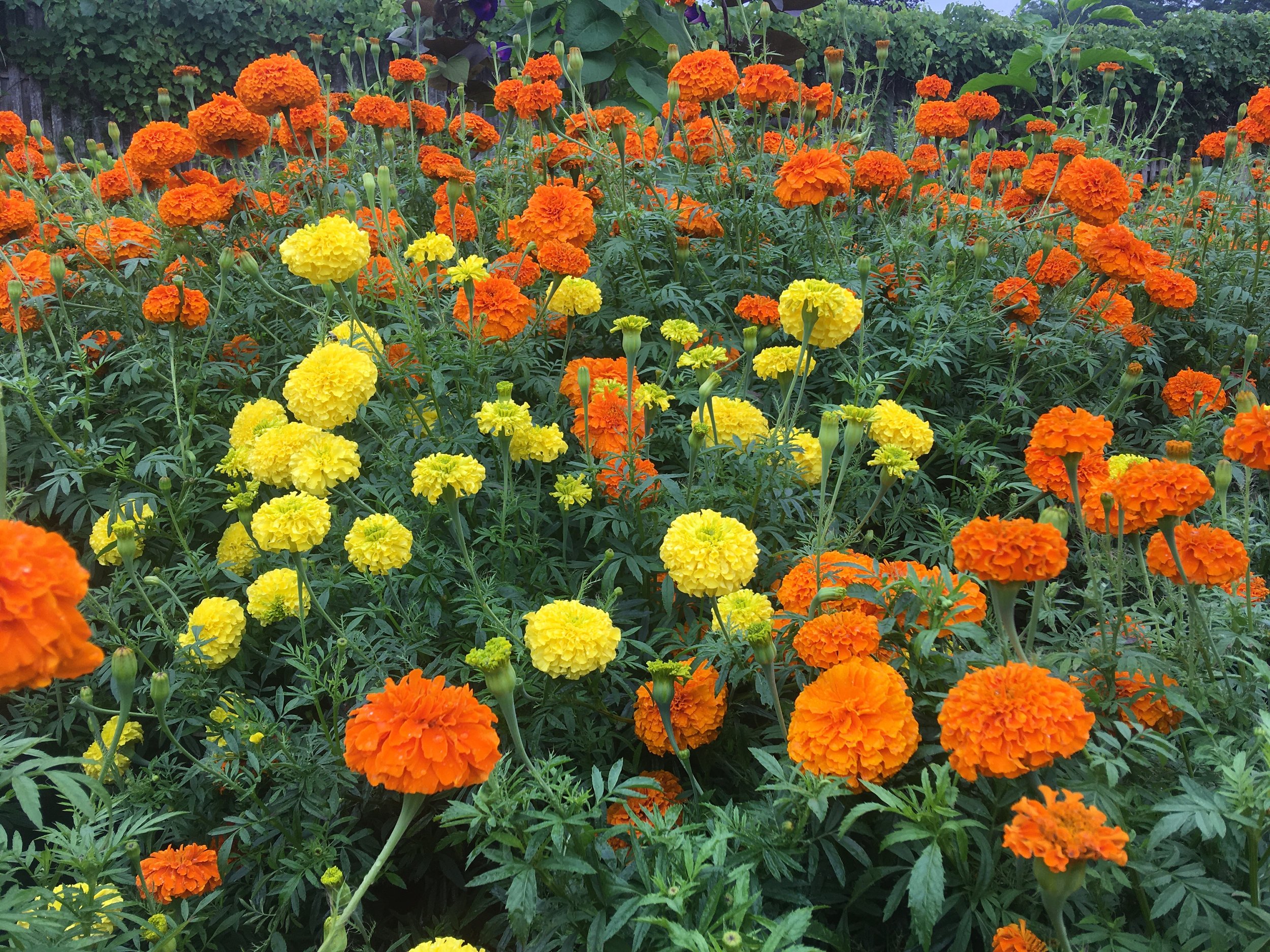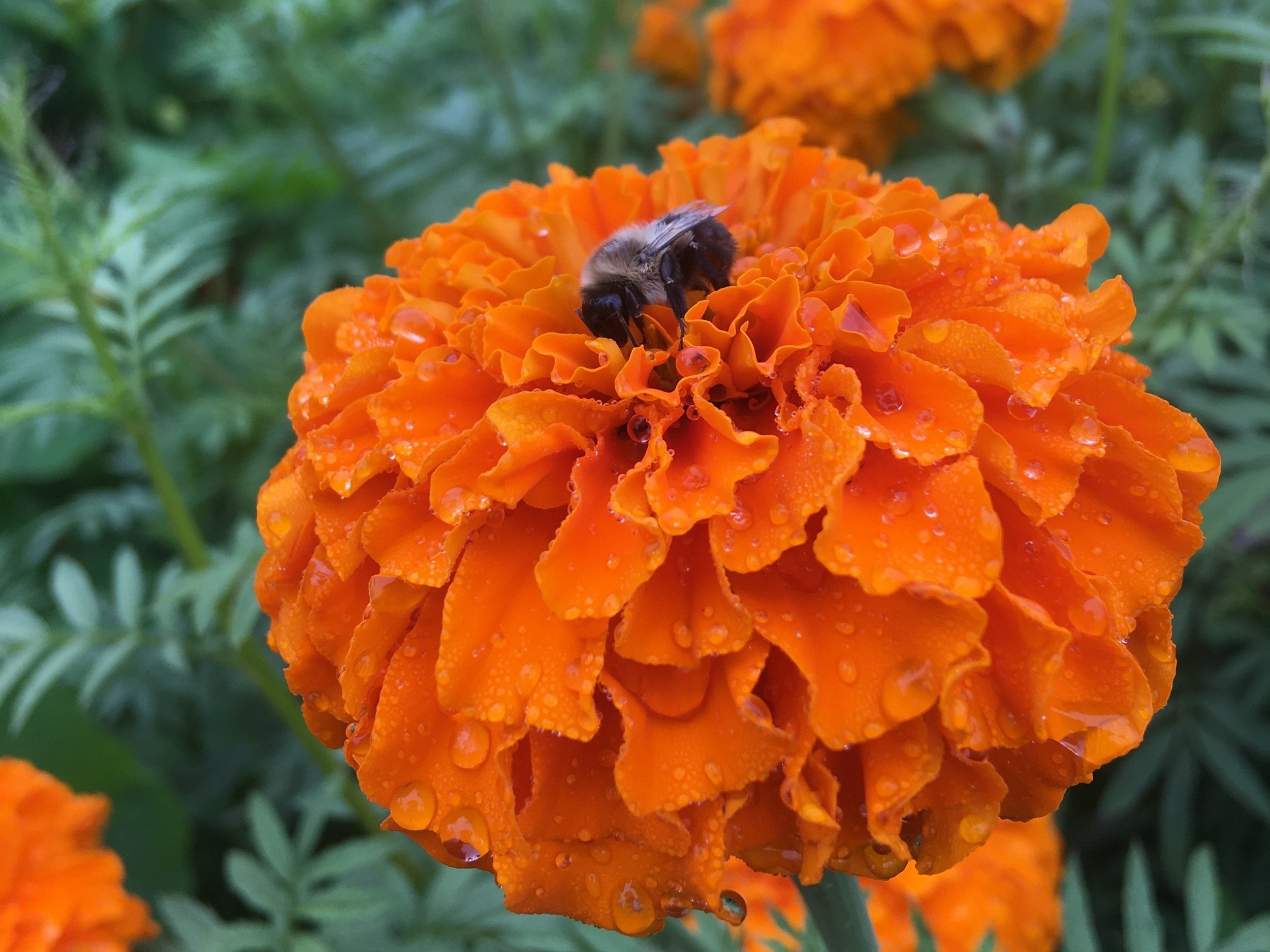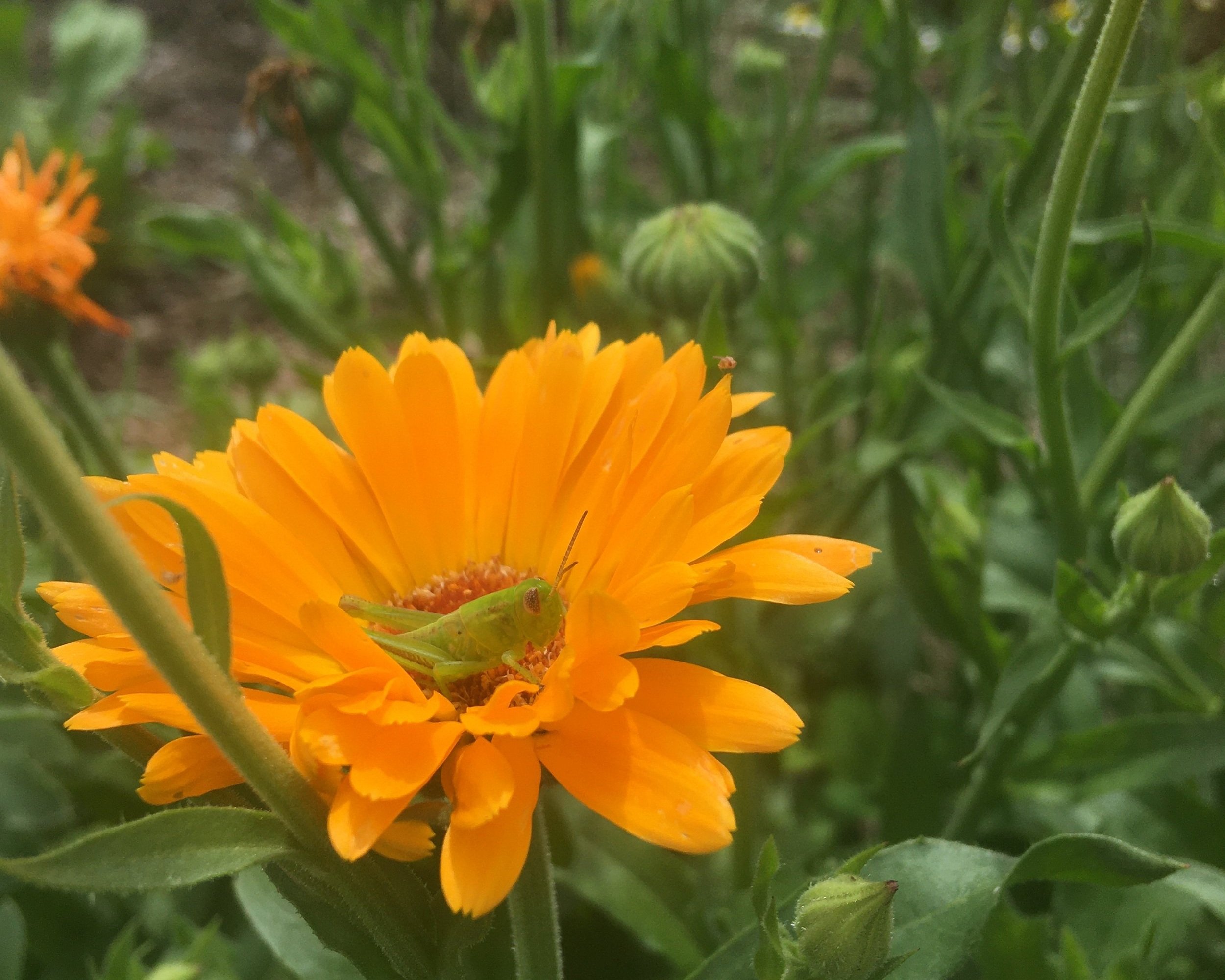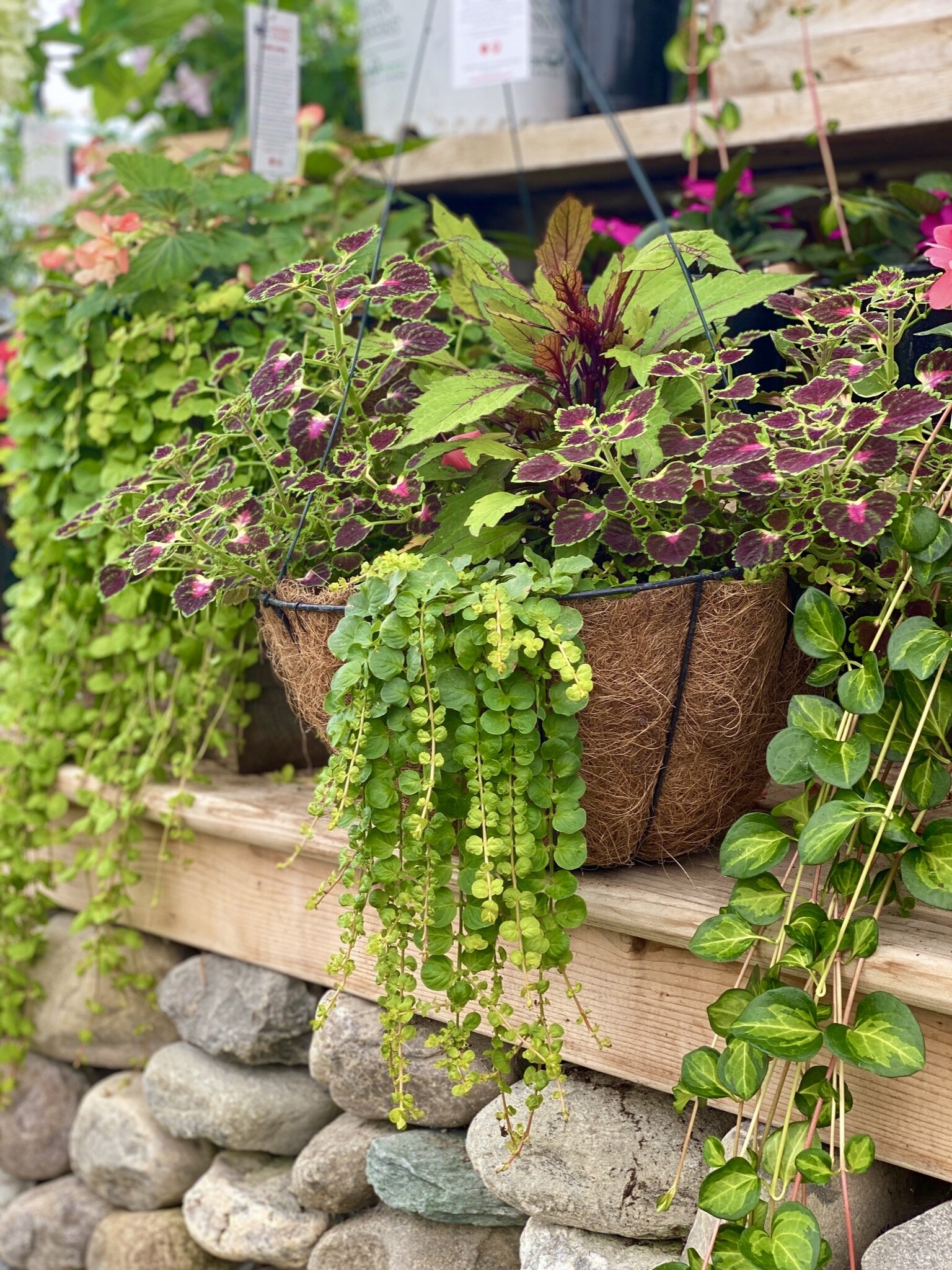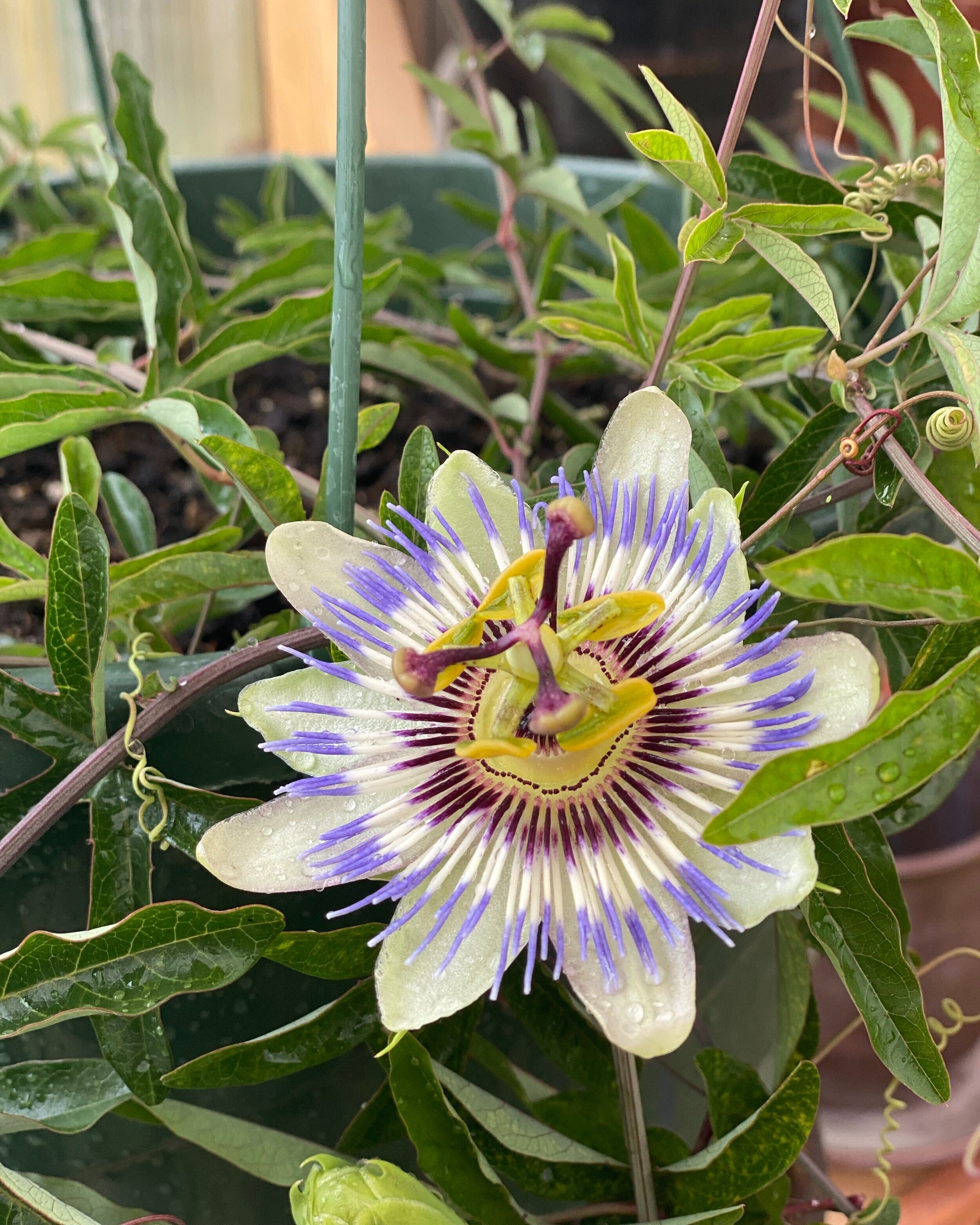Many of our beloved annual flowers have applications beyond their beauty in the garden or the vase. You may already be growing edible flowers without realizing it! These flowers are great for adding color and flavor to summer dishes or freezing in ice cube trays for magical floral beverages. Choose from this list when growing a kid-friendly cutting garden to allow for as much hands on interaction as possible.
It’s important to note that “edible” does not necessarily translate to “delicious”. But many of these flowers do offer a nice addition of flavor, and those that are more bland or bitter are still worthwhile choices for decorating cakes or using as a garnish.
Additionally, as with anything headed for the kitchen, it’s important to either grow from seed or purchase plants from an organic greenhouse like Red Wagon, so that you know they haven’t been treated with chemicals that would render the flowers less than lovely to eat.
Stock and Sweet Alyssum, both edible flowers in the Brassica family
Sweet Alyssum (Lobularia maritima): This sprawling member of the Brassica family has the four-petaled flowers that identify that genus, and the leaves and flowers are characteristically peppery. Include in an arugula salad for some color and extra zing. As a bonus, alyssum (and its bigger cousin, the Lobularia cultivar) provide some helpful early pollinator habitat and pest protection when planted in the vegetable garden.
Violets and Pansies (Viola spp.): The colorful violas and pansies found early in spring at the greenhouse are nearly identical to those sweet spring flowers poking through the grass in your backyard, and all parts of the plant are edible. The fresh flowers have a sweet, almost wintergreen-like flavor and look gorgeous when candied and pressed into cookies or iced cakes.
Calendula and Marigold (Tagetes spp.): We’re such big fans of these two genus we made a whole other blog post about them! Calendula has long been used as a tea herb, and the different marigold species have a wide array of edible and medicinal uses dating back to Aztec times.
Bachelor Buttons (Centaurea cyanus): One of the easiest “true blue” flowers to grow, Bachelor’s Button flowers also come in a sweet array of purples, whites and pinks, with a mildly sweet and vegetal flavor. The petals retain their blue color quite well when dried, so be sure to harvest and dry some to brighten up herbal tea blends this winter.
White Snapdragons against a backdrop of African Blue basil
Snapdragons (Antirrhinum spp.): While the flowers of this eye-catching species certainly aren’t going to win any taste tests (they are typically described as “bland” and “bitter”), they are in fact edible. Pluck the petals from the bitter base of the flower and arrange on a platter to create a showstopper garnish for any summer meal.
Nasturtium (Tropaeolum spp.): Nasturtiums are one of the most commonly used edible flowers, and are well known for their bright, spicy flavor. Add leaves and flowers to salads, infuse a flower vinegar, pickle the buds and seed pods… the possibilities are only limited by your imagination and affinity for their peppery bite.
Stock (Matthiola incana): A longtime favorite of florists, four-petaled stock is in the Brassica family like sweet alyssum. The flowers are peppery and clove-like, so try adding them to salads or atop grilled fish and vegetables for a colorful kick.
Dianthus (Dianthus caryophyllus): The annual species of this classic carnation has been in cultivation for well over 2,000 years. The flower petals are fragrant and have a mild clove-like flavor, perfect for adding to iced beverages and fancy desserts. Pluck petals off the bitter green base before use.
Scarlet Runner Bean ‘Painted Lady’ (Phaseolus coccineus): This vining relative of the common bush bean is native to the highlands of Central America. The beautiful red and white flowers can be enjoyed as a snack or in salads, or left to ripen to mature beans which can be eaten fresh or dried down.
Hyacinth Bean Vine (Lablab purpureus):This gorgeous vining bean is similar in habit and use to scarlet runner bean, and has been cultivated as a food crop in Africa and the tropics for millenia. The elegant purple leaves make a good cooking green, and the beans are edible when fully cooked.
Ruby Moon Hyacinth bean vine

